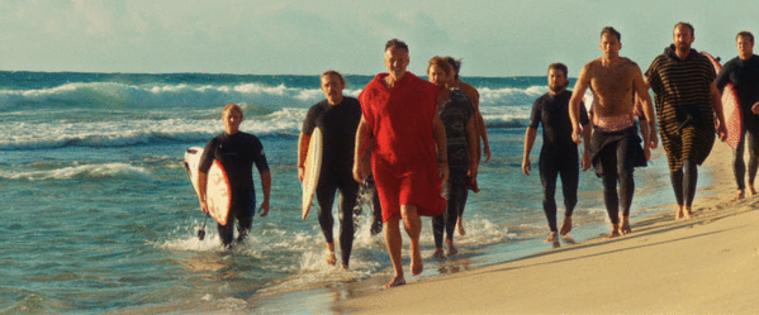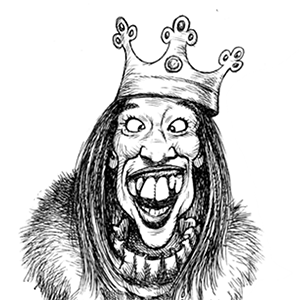Movie review: Nicolas Cage catches surreal wave in 'The Surfer'
Published in Entertainment News
In Lorcan Finnegan’s existential surf-noir “The Surfer,” our titular wave worshipper (Nicolas Cage) learns the hard way that you can’t go home again. Riffing on Australian New Wave classics like “Wake in Fright,” Irish filmmaker Finnegan and writer Thomas Martin place their star in a sun-blasted car park overlooking the tasty tubes of the fictional Luna Bay, Australia, and let him unravel under the mental torment of a local surf gang led by the charismatic Scally (Julian McMahon).
“Don’t live here, don’t surf here,” is the threat barked at our nameless surfer and his teenage son (Finn Little) when they step onto the sand at Luna Bay, boards in hand. He was hoping to paddle out and show his son the house he’s planning to purchase, on a cliffside above the water. It’s his childhood home, the place he grew up before his father’s death required them to relocate (hence his American accent).
“Don’t live here”? He’s from here. He even recognizes the icy-eyed Scally, who rules the roost from his surf shack, clad in his ubiquitous towel poncho, marshaling his legion of cult-like followers, who might just be a crew of rowdy, insular surfers, but could be something much darker than that.
Our man lingers in the beach parking lot, rattled by his interaction with the Bay Boys, indignant and determined to work his way back into the world of Luna Bay locals. Through a series of small but significant events, he becomes perplexingly stranded there, waiting for the police to arrive, the battery on his car and phone draining away. His sanity frays, his reality recedes; he seems to become that which he fears, a vagrant living in his car, increasingly feral, stripped of the signifiers of his identity, and ultimately his identity itself, his ego melting away, fried on hot asphalt.
With hints of criminal activity around the edges of “The Surfer,” the film could have been a surf-noir in the vein of “Point Break,” with Scally playing the charismatic Bodhi-type figure, alternately terrifying and seducing our outsider. But the film is more focused on the subjective experience of physical and mental degradation of our protagonist, and Finnegan locks us into that world through the film’s surrealist style.
Cinematographer Radek Ladczuk composes saturated and sand-blasted images of paradise that start to fade and fuzz at the edges, warped and watery; zooms call to mind their 1970s references. The soundtrack does a lot of emotional heavy lifting too, with composer François Tétaz delivering ethereal stringed arrangements that venture into the territory of 1960s-style Latin lounge music. The result is a heady, hypnotic experience that works in tandem with Cage’s performance of a man losing himself to find where he belongs.
“The Surfer” is narratively wispy; its heft comes from its intoxicating style and Cage’s performance — which could be bonkers, but is instead emotional and grounded. There are avenues this story could take to explore a more sprawling crime narrative, but Martin’s script only alludes to those events. The film is too surreal and over-the-top to result in any insight about toxic masculinity or the inner workings of Scally and his Bay Boys, keeping us imprisoned within the protagonist’s inner journey on this psychic voyage to the heart of darkness. He ultimately experiences a necessary catharsis about his own childhood, and the revelations ring true, if slightly underwhelming. As it turns out, you can go home again, you just won’t be the same person once you get there.
———
'THE SURFER'
2.5 stars (out of 4)
MPA rating: R (for language, suicide, some violence, drug content and sexual material)
Running time: 1:40
How to watch: In theaters May 2
———
©2025 Tribune Content Agency, LLC
















Comments